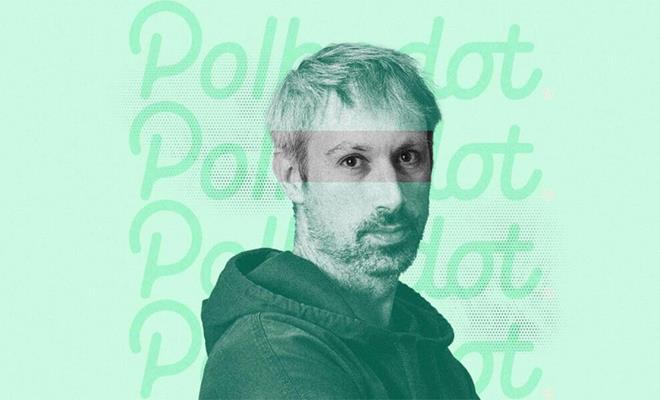
Who is Gavin Wood? Getting to Know the Creator of Polkadot
Gavin Wood is more than just a name in the blockchain world — he represents innovation, vision, and a strong drive for a decentralized future. Best known for co-founding Ethereum and later creating Polkadot, Wood has helped shape how blockchain technology has grown and evolved. His work is not just about coding; it touches on the ideas and design of a fairer, more open digital world.
Academic Beginnings: A Curious Mind 🎓
Born in 1980 in London, UK, Gavin Wood showed early signs of intelligence and love for learning. He studied at the University of York, where he earned a Master’s degree in Computer Systems and Software Engineering. His passion for mixing science, creativity, and technology led him to pursue a PhD focused on music visualization and how humans interact with computers — combining art and logic in a unique way.
This research helped him understand how people engage with digital systems, which later influenced his work on user-friendly decentralized platforms.
The Ethereum Journey: Breaking New Ground with Smart Contracts ⚙️
In 2013, Gavin met Vitalik Buterin, who had created the Ethereum whitepaper. Excited by the idea of a blockchain that could run decentralized apps, Wood joined the project as a co-founder. His role was vital — both in the technical building and in shaping the concept.
He was Ethereum’s first Chief Technology Officer (CTO) and wrote the first version of the Ethereum Virtual Machine (EVM), the heart of Ethereum that runs smart contracts. Gavin also created Solidity, Ethereum’s programming language, giving developers the tools to build decentralized applications (dApps). This opened the door for innovations like DeFi (decentralized finance), NFTs, and DAOs.
Even as Ethereum grew, Wood recognized its limits. He believed real decentralization needed better scalability, interoperability, and governance — challenges Ethereum struggled with due to its design.
Polkadot: Connecting Blockchains for a Better Future 🕸️
In 2016, aiming to solve Ethereum’s issues, Gavin Wood left the Ethereum Foundation and started working on Polkadot — a new blockchain protocol built to connect multiple blockchains together in a secure, scalable way.
Polkadot’s key innovation is the relay chain, a central layer that links many special-purpose blockchains called parachains. These parachains can communicate and share information securely while keeping their own rules and control. This design supports growth, data sharing, and customized blockchain development without losing decentralization.
Polkadot uses a native token called DOT, which is used for staking, bonding, and governance decisions. Developers can build new blockchains easily with Substrate, a flexible framework made by Wood’s company, Parity Technologies.
By letting parachains work together smoothly, Polkadot enables endless possibilities — from multi-chain finance systems to supply chains, identity solutions, and gaming platforms that share blockchain technology.
Web3: A New Vision for the Internet 🌐
Beyond building blockchains, Gavin Wood is one of the strongest voices behind Web3 — a future internet owned and controlled by its users instead of big companies. Unlike today’s Web2, where platforms hold all the user data, Web3 gives people control over their own information, offering transparency and resistance to censorship.
Wood actually coined the term "Web3" in 2014, well before it became popular. He imagined a world where blockchain powers social media, commerce, governance, and more — a world that protects privacy and freedom through technology.
To make this vision real, he started the Web3 Foundation, which supports research and development of decentralized technologies. The foundation provides grants, encourages community projects, and helps educate the public about building an open internet.
Parity Technologies & Developer Tools 🛠️
Gavin Wood’s impact also comes through Parity Technologies, the company that creates essential tools for Web3. Parity builds Substrate, a modular framework that makes it easier for developers to launch their own blockchains without starting from zero.
Blockchains built with Substrate can connect to Polkadot or run independently, offering great flexibility. This toolkit is now popular worldwide and is helping spread Web3 across many industries.
Open Source and Global Community 🌍
Wood strongly supports open-source software — technology that anyone can view, use, and improve. Both Ethereum and Polkadot remain open source, encouraging people from around the world to join, collaborate, and innovate.
Through events like Polkadot Decoded and hackathons funded by the Web3 Foundation, Gavin has built a lively community of developers, researchers, and entrepreneurs who share his vision and keep pushing blockchain technology forward.
A Decentralized Future: The Impact So Far 🌱
Thanks to visionaries like Gavin Wood, blockchain is entering a new era. His work helps redefine trust in digital systems and offers new ways for communities — not just companies — to govern technology.
In today’s world, where privacy and data control are hot topics, Wood’s ideas provide a roadmap for a fairer digital ecosystem. From identity systems that you control yourself to decentralized cloud services, his influence can be seen in many exciting new projects.
The Road Ahead: Building a Fully Decentralized Web 🚀
Gavin Wood keeps leading the way in blockchain innovation. Projects like Kusama, a “canary network” for Polkadot, let developers test new features in real-world settings safely and quickly.
His mission remains clear: to empower people, build strong blockchain infrastructure, and grow the adoption of decentralized technology everywhere. Whether in tech hubs or developing countries, Web3 could reshape the internet — and Gavin Wood is one of its key architects.
Conclusion: Gavin Wood’s Lasting Legacy 💡
Gavin Wood is more than a developer; he is a visionary shaping the future of the internet. From co-founding Ethereum and inventing Solidity, to launching Polkadot and promoting Web3, his work touches the entire crypto world.
As the world moves toward decentralization, Wood’s vision continues to inspire developers and innovators. The internet he imagines is secure, open, and inclusive — a reality built block by block.
The decentralized revolution has just begun, and Gavin Wood is leading the way to a future where technology serves everyone, not just a few.